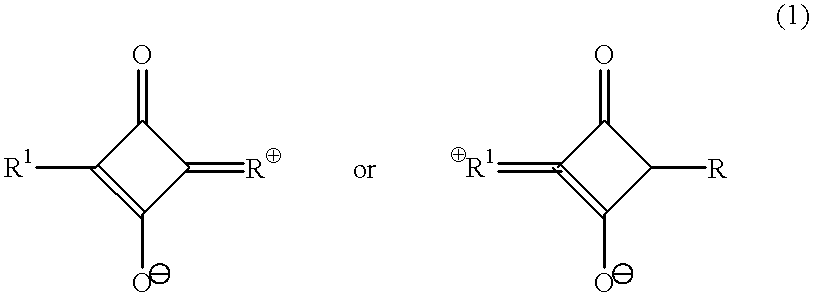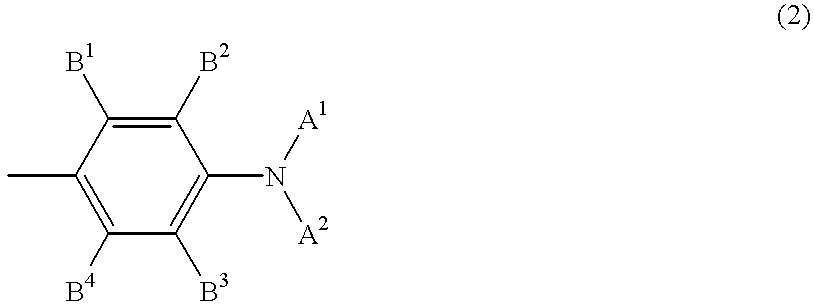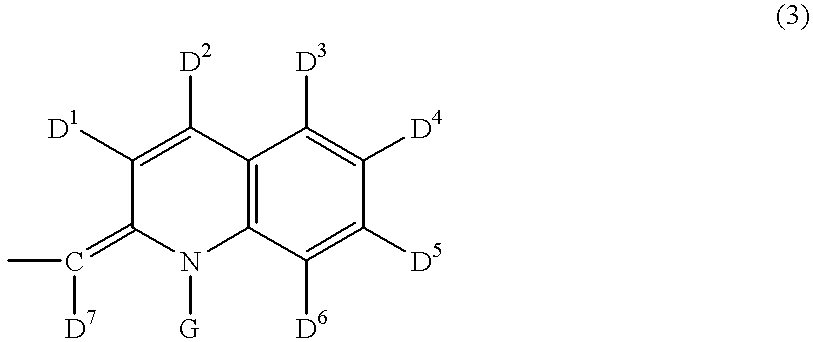Raman-active taggants and their recognition
- Summary
- Abstract
- Description
- Claims
- Application Information
AI Technical Summary
Benefits of technology
Problems solved by technology
Method used
Image
Examples
example 1
General experimental setup I. A table-top system comprising a Perkin Ehner Corp. (Analytical Instruments, 761 Main Ave., Norwalk, Conn., 06859-0012 USA) NIR-FT Raman accessory fitted to a Perkin Elmer 1720 X FTIR spectrometer constituted the base of the first instrumental setup useful for accomplishing aims of the invention. The 1720X interferometer is furnished with a long-range KBr beam-splitter which gives a working range of between 370 and 10,000 cm.sup.-1. A specially stabilized Spectron SL-301 c / w Nd:YAG laser emitting at 1064 nm (9394 cm.sup.-1. TEM.sub.00 mode) manufactured by Spectron Laser Systems Ltd. (Rugby, UK) specifically for Perkin Elmer was used, providing between 2 mW and 3.5 W at the sample with a stability of 0.1% RMS. The sample optics employed is based on a 180.degree. back-scattering lens system (f / 0.6). The laser beam is directed on to the sample via a small prism, and its diameter at the sample position is approximately 0.5 mm. The scattered radiation is foc...
example 2
General experimental setup II. In another preferred embodiment of the invention, an alternative instrumental setup based on a miniature Raman spectrometer furnished with a fiber optic sampling probe was used for taking measurements directly "in the field". The complete system includes a S2000 miniature spectrometer manufactured by Ocean Optics Inc. (Dunedin, Fla. USA), an Enviva fiber optic Raman probe manufactured by Visionex Inc. (430 Tenth Street, N.W., Suite N205, Atlanta, Ga. 30318 USA) and, for example, an INF-780 single-mode AlGaAs diode laser manufactured by World Star Tech Inc.(Canada) as the main components. The S2000 spectrometer is based on a Czerny-Turner-type miniature spectrograph and has a Sony ILX511 noncooled rectangular reduction-type CCD linear image sensor as the detector. The sensor has 2048 pixels with a pixel size 14 .mu.m.times.200 .mu.m (14 .mu.m pitch) and maximum clock frequency 2 MHz. In accordance with aims of the invention, a 1200 lines / mm ruled gratin...
example 3
General experimental setup III (Co-pending application possible). In another embodiment, an optional experimental setup has been devised and used for measuring thin-film prints produced in accordance with the present invention. To enhance detectability of the marks, patterns or images generated on a carrier in accordance with the invention, and thus now bearing a Raman-active compound of the invention (or a mixture thereof), a miniature waveguide Raman probe was used in frames of the general setup described in Example 2. More powerful 785-nm pigtailed diode laser module, for example, that manufactured by BWTec Inc., was used as an external excitation source in this setup. Such pigtailed single-mode laser gives up to 500 mW at the distal fiber end, the spectral bandwidth of the laser line to be about 1.2 nm HWFM. The exciting NIR laser beam was inserted through the end face of an internal reflection element (IRE) that had an appropriate end face angle, so that the refracted light was...
PUM
| Property | Measurement | Unit |
|---|---|---|
| wavelength | aaaaa | aaaaa |
| excitation wavelength | aaaaa | aaaaa |
| wavelengths | aaaaa | aaaaa |
Abstract
Description
Claims
Application Information
 Login to View More
Login to View More - R&D
- Intellectual Property
- Life Sciences
- Materials
- Tech Scout
- Unparalleled Data Quality
- Higher Quality Content
- 60% Fewer Hallucinations
Browse by: Latest US Patents, China's latest patents, Technical Efficacy Thesaurus, Application Domain, Technology Topic, Popular Technical Reports.
© 2025 PatSnap. All rights reserved.Legal|Privacy policy|Modern Slavery Act Transparency Statement|Sitemap|About US| Contact US: help@patsnap.com



